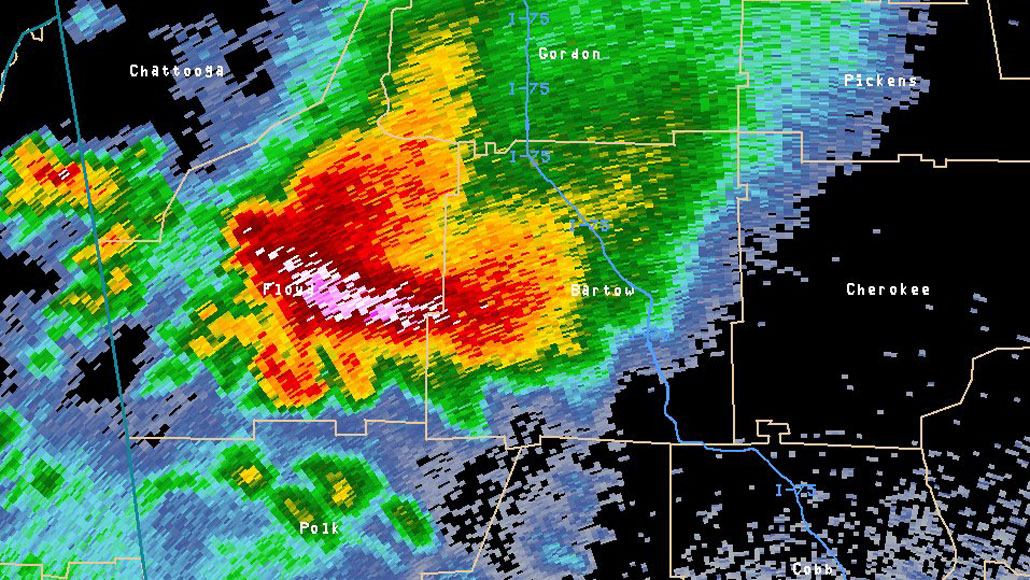50 years ago, scientists were getting a better glimpse inside storms
Excerpt from the June 27, 1970 issue of Science News

Doppler radar allows meteorologists to take a peek at the intensity of precipitation in a storm. In this image of a 2011 tornado-producing storm in Georgia, brighter colors indicate more intense rainfall.
NOAA/NWS/Atlanta National Weather Service Forecast Office







